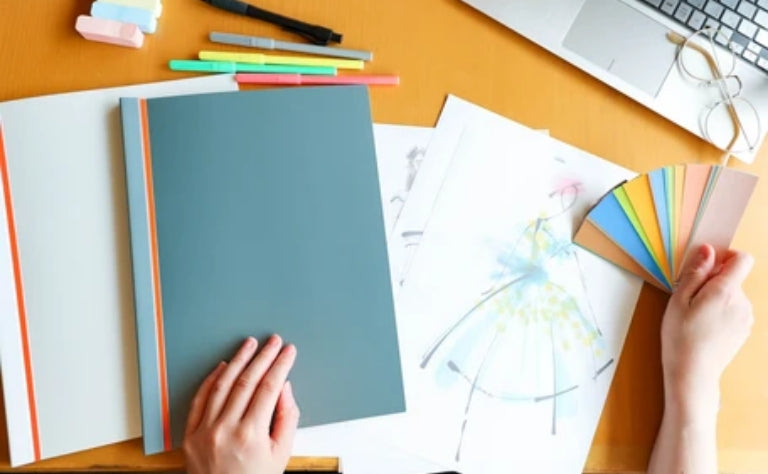Article: The inspiration for the development came from "children's notebooks that couldn't be fully used."

The inspiration for the development came from "children's notebooks that couldn't be fully used."
This time, I would like to talk about the story of a children's school notebook that became the inspiration for developing the SlideNote.
Thirty years ago, when I was in elementary school, each subject had its own specific type of notebook—such as a certain-sized notebook for Japanese language and specific line spacing for math—and we would use those notebooks. This is still the same for children today, with nothing having changed. When I watch my own children, I notice that sometimes, when the semester changes, the required notebooks change as well. And when they advance to the next grade, they often end up switching to a new notebook without even using more than half of the previous one.
Each time, I cut apart the leftover notebooks from the main body with a cutter and repurpose them into memo pads by clipping them together. Perhaps it's because I work in the paper industry, but I often feel that it's wasteful and not environmentally friendly.
When I hear news about elementary school students suffering from back pain due to the weight of their school bags, I can’t help but worry—especially in spring, when I see first graders just starting school walking with such heavy backpacks. Textbooks may be unavoidable, but when it comes to notebooks, even for each subject, students only use about five pages a day. That means they’re carrying around blank pages they won’t even use that day. I often wonder if there’s a better solution to this.
The fact that many notebook pages go unused, and that having just the number of pages needed for the day is often enough—these two points sparked the development of SlideNote. We wanted a notebook that could be easily taken apart and reassembled at any time. In other words, rather than thinking of a notebook as a fixed “book,” what if we could think of it in terms of individual “pages”? That idea became the starting point of SlideNote, born from the hope that it might be useful to someone.
After that, I thoroughly searched the market for readily available notebooks, files, and binders. Eventually, I came across a slide-style binder made by a major stationery manufacturer. When I tried using it as a notebook, I found that it lacked the grip strength needed to hold the paper securely, causing the pages to fall out during writing. In short, it didn’t function well as a notebook. But it made sense—most of these products are designed and manufactured for presentation purposes, not for everyday writing.
In this way, I realized that there was nothing on the market that allowed me to quickly clip in loose sheets and still use them like a notebook. So I thought, "If it doesn’t exist, let’s create it!" — and thus, we launched an in-house project to develop one ourselves. Aiming to create a new kind of notebook culture, we began developing a structure that would firmly grip the paper yet allow that grip to be released easily.
Written by: Taichiro Kanzaki, President and CEO, Kenkousha Co., Ltd.

